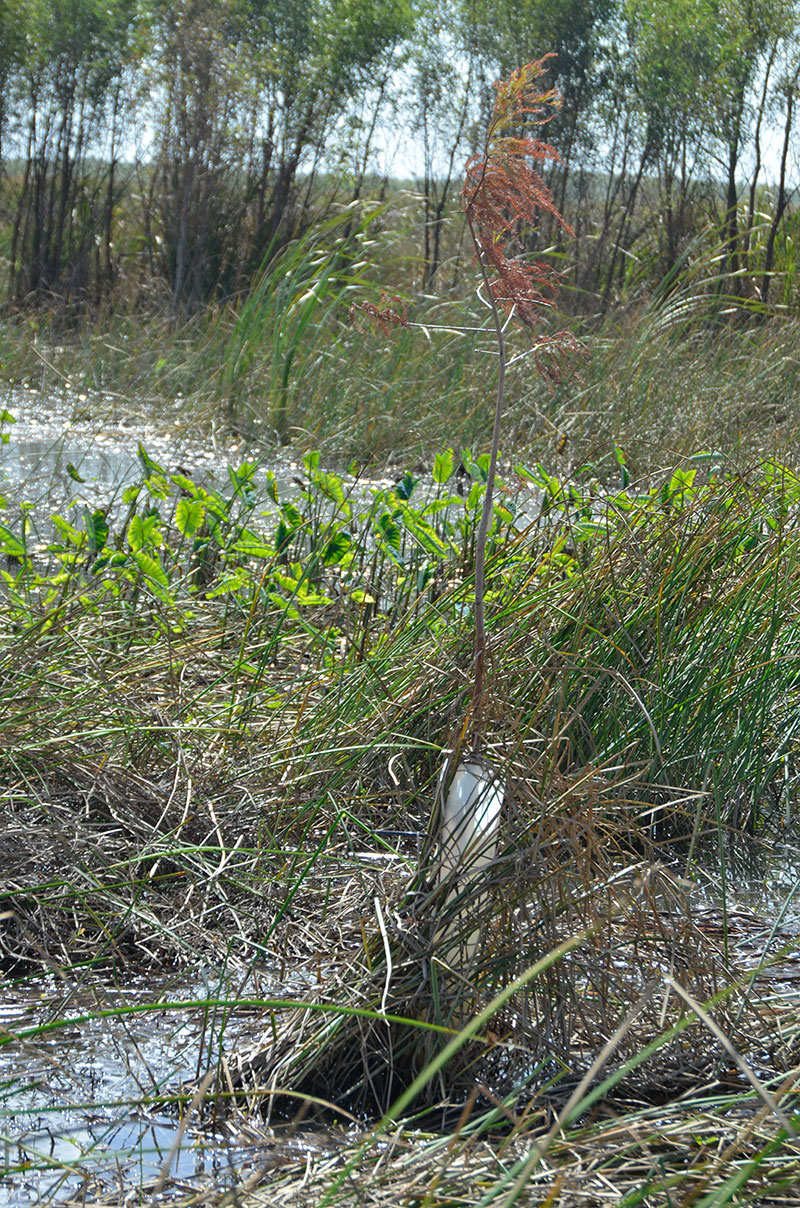
The term “laissez les bon temps rouler” carries the French meaning of “let the good times roll.” While that represents the overall attitude of Louisiana’s constituents and visitors, Mother Nature has also adopted the school of thought. Neptune Pass, a waterway connecting the Mississippi River and Quarantine Bay, has grown in popularity and size. The river’s good times of nutrient-rich sediment roll into the bay, forming new land.
The benefits are already showing.
Dr. Alex Kolker, PhD of the Louisiana University Marine Consortium (LUMCON), noticed the distributary’s growth in size after the floodwaters of 2019 increased the volume of water flowing down the Mississippi River. Located across the river from Buras, the entrance to Neptune Pass began widening. Today, Neptune sports a width of 450 to 650 feet, and its depth ranges from 50 to 100 feet, all thanks to the more significant accumulation of river flow.
“It carries about 100,000 to 150,000 cubic feet of water when the river is high, but recently, given the low water in the Mississippi River, it carries closer to 20,000 to 30,000 cubic feet per second,” Kolker said.
With that enormous flow of water comes sediment disbursement. Mother Nature has contracted her own coastal restoration project as the water funnels through Neptune. As the rich sediment is deposited at the mouth of Neptune, substantial land is being built into Quarantine Bay.
Not without controversy
However, what seems to be a natural wonder has been surrounded by controversy.
The volume of water traveling from the river into Neptune commands such a large volume that the Corps of Engineers attempted to restrict its opening earlier in the year, hoping to reduce the vacuum created on the ships using the Mississippi River as their route to the Gulf of Mexico.
They say that seeing is believing, so I joined a Coalition to Restore Coastal Louisiana (CRCL) excursion to Neptune to understand better the effects levied by sediment dispersal. Captain Richie Blink of Delta Discovery Tours provided the group’s charter, which detailed the fruits of Neptune’s natural labor.
While stationed at the mouth of Neptune and peering out into Quarantine Bay, Blink identified a distant oil platform.
“How far out do you think that platform is,” asked Blink. “It’s about 3.8 miles out. Past it, you can walk in ankle-deep water.”
It was high tide when Blink made that announcement, and with what resembled a broom handle, he checked the depth outside the boat. It was approximately 4 feet deep, revealing that at low tide the land created would resemble sandbars that the group could have disembarked upon and walked.
Back to the future
Many say to see what the future holds, all one must do is to look at the past. While floating in Quarantine Bay and looking back to the mouth of Neptune, an abundant display of land populated with lush vegetation and wildlife can be seen thriving. What appears to have been there since the beginning of time, Blink made it known that it was all new land formed through the natural sediment disbursement.
As the mixture of fresh river water collided with salty bay water carrying our vessel about, bottlenose dolphins kept the group company as they played hide and seek around Blink’s boat. Birds flocked to the mature trees and thick grass. A count of four boats showed sport fishermen taking advantage of the cuts and tributaries making up the new framework of Neptune’s mouth.
According to Capt. Ryan Lambert of Cajun Fishing Adventures, a pivotal component to building sustainable land through sediment dispersal is controlling the sediment’s speed of delivery.

“You have to slow the rate down, or the sediment doesn’t have an opportunity to build,” Lambert said. “It will just get displaced.”
Lambert previously partnered with Ducks Unlimited on a crevasse project that benefits Neptune and other areas. A crevasse is a dredge cut made through the natural banks of passes and channels the freshwater and sediment. This has helped control Neptune’s flow and direction to take advantage of the sediment diversion.
See the difference
So, considering the approximate $3 billion price tag of the Mid-Barataria Sediment Diversion project, a coastal restoration project that will channel Mississippi River freshwater and sediment into the Barataria Basin, it might seem unfathomable to understand the controversy. Neptune seems to deliver the same results sought by the Mid-Barataria project plan, but some believe the gains to be direct threats to wildlife and fisheries, while others counter.
“All you have to do is look across the river and see the difference,” Lambert said. “Nothing is happening, but if you look at Neptune Pass, it is the direct opposite. We have new land formed that is so hard you can walk on it. It is populated with deer and rabbits, and we have a plethora of Mottled ducks, once on a decline.”
Lambert added, “All of this new land is great for habitat. It’s great for fishing and even crawfish. There are birds as far as you can see.”
The solid new ground that started as silt buildup boasts large willow trees, cattails, duck potato, and other vegetation. CRCL has even planted cypress trees in various areas.
According to James Karst of CRCL, 2,000 square miles of Louisiana have vanished since the 1930s. Equivalent to the size of Delaware, land eroded can be offset by land replacement, which is critical to the state when combatting the detriments of hurricane season.
“The more land we have between us and the Gulf of Mexico, the better,” Karst said.
The Mississippi River has been defiant in its plan, which is different from that of the population. Karst said the river is naturally attempting to select a new path, and historically, municipalities have attempted to control it, with levee systems being the primary example. Still, these controls come with issues.
“In 1927, they had to blow the levee near Caernarvon to save New Orleans,” Lambert said. “Neptune Pass is a natural means to relieving the pressure of the Mississippi River’s flow.”
The Corps has deposited rock at the mouth of Neptune to slow the water flow and relieve the suction levied against the shipping industry. A finalized solution has yet to be determined, but multiple parties have weighed in on what the future should hold. While Louisiana succumbs to devastating land loss, Neptune’s natural land development will influence the solution. Still, considerations will be made to the shipping industry as the Mississippi River serves as the only viable route to the Gulf of Mexico.
While the state touts a Sportsman’s Paradise mantra, attention must be pointed to the impact on wildlife and fisheries. With multiple areas of importance at hand, the fate of Neptune relies on a multi-faceted and complicated solution yet to be announced, but certainly on its way.
